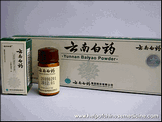Traditional Chinese medicine considers the chronic pain caused by arthritis, for instance, to result from blockage of qi at the joints, usually caused by excess wind and dampness.
Shenyi Center of Chinese medicine has a variety of Chinese medicine for pain available click here
- Chinese Medicine for cardiovascular diseases and heart
- Chinese Medicine for gastro-intestinal disorders (poor appetite, indigestion, gastritis, diarrhea)
- Chinese Medicine for men (prostatitis, impotence etc.)
- Chinese Medicine for women (gynecological conditions, pre-menstrual syndrome, infertility)
- Chinese Medicine for liver syndromes (fatty liver, hepatitis)
- Chinese Medicine skin diseases (swelling, eczema, psoriasis)
- Chinese Medicine for asthma, bronchitis, chronic coughs
- Chinese Medicine for rheumatism, arthritis, osteoarthritis
- Chinese Medicine for hypertension
- Chinese Medicine for allergies
- Chinese Medicine for common cold and flu, sore throat
- Chinese Medicine for pain relieve
- Chinese Medicine for fatigue syndrome
- Chinese Medicine for weight loss
Yan Hu Suo Zhi Tong Pian helps relieve pain of menstrual discomfort, liver or gallbladder problems, angina, muscle spasms, or injuries. It can have a tranquilizing effect, making it useful for treating insomnia due to pain.
Dosage: 4-6 pills per time, three times per day, contains 100 pills
Read more...
Angong Niuhuang Wan won many awards in China including gold medal for quality in 1979 and the title of famous brand in Beijing in 1994.
Dosage: Adults take 1 pill orally once a day with lukewarm water.
Manufacturer: Beijing Tong Ren Tang
Read more...
Yunnan Baiyao is the fastest treatment of different traumatic injuries, sports injuries, arthritic pain, open wounds made by knife, even bullet, or if you cut yourself shaving, no matter how severe they have been, just put Yunnan Baiyao powder directly on a scar, open wound or place of injury.
In China Yunnan Baiyao is commonly used to treating bruises, contusions, chilblain, rheumatism and numbness, pains in bones muscles and joints. It can be used to arrest hemorrhage, stanch bleeding, activate blood circulation, eliminate inflammation , disperse blood clots, discharge pus and counteract toxin.
Everyone must have Yunnan Baiyao at home or car and in first aid kit in case of emergency. If an accident were to occur, this powder could be very, very important. Apply directly to bleeding wound (clean first, and bandage afterwards). In deep or wide wounds, squeeze cut together, pour powder on, and keep closed for 1 to 2 minutes.
Manufacturer: Yunnan Baiyao Group Co., Ltd.
Read more...
Apply the cream, then cover the burn with a dressing, change daily
Contains 20 g
Manufacturer: Tianjin Lerentang brand
Read more...
If the skin is not broken, it can be applied topically to the area of injury to relieve pain until the bone is set at the hospital.
Apply Zheng Gu Shui twice daily to the affected area with a cotton ball and leave it to dry.
Wrap the affected area with gauze.
Manufacturer : Guangxi Yulin brand
Read more...
Use of Herbal Therapies to Relieve Pain: A Review of Efficacy and Adverse Effects
James H. Wirth BA, J. Craig Hudgins BA and Judith A. Paice PhD, RN
Department of Psychology, Purdue University, West Lafayette, Indiana
Department of Medicine, Division of Hematology/Oncology Feinberg School of Medicine, Northwestern University and the Robert H. Lurie Comprehensive Cancer Center of Northwestern University, Chicago, Illinois
Department of Medicine, Division of Hematology/Oncology, Feinberg School of Medicine, Northwestern University and the Robert H. Lurie Comprehensive Cancer Center of Northwestern University, Chicago, Illinois
To find holistic treatment with effective pain relief and few side effects, Americans spend billions of dollars annually on complementary and alternative medicine, including herbal therapies. Despite extensive use, the lack of regulatory scrutiny of these herbal supplements contributes to the paucity of reliable clinical data assessing their efficacy and safety. This review summarizes the existing studies investigating the efficacy of herbal therapies as a treatment for pain. Possible side effects, potential drug–herb interactions, and information about common herbal therapies are also summarized. MEDLINE, AMED, and the Cochrane Library databases were searched for the period from January 1966 to June 2005. Uses, dosages, routes of administration, and side effects were summarized. Strength of empirical evidence also was evaluated. This review found few well-controlled clinical studies. Furthermore, these studies documented limited efficacy of herbal therapies to treat pain. The information presented here may be used to further educate nurses and patients on the use of herbal therapies as well as direct future research efforts.
Interaction between Shaoyao-Gancao-Tang and a laxative with respect to alteration of paeoniflorin metabolism by intestinal bacteria in rats.
He JX, Goto E, Akao T, Tani T.
Institute of Natural Medicine, Toyama, Japan.
Shaoyao-Gancao-Tang (SGT), a traditional Chinese herbal medicine (Kampo formulation) containing Shaoyao (Paeoniae Radix) and Gancao (Glycyrrhizae Radix), is co-administered with laxative sodium picosulfate as a premedication for relieving the pain accompanying colonoscopy. Paeoniflorin (PF), an active glycoside of SGT, is metabolized into the antispasmodic agent paeonimetabolin-I (PM-I) by intestinal bacteria after oral administration. The objective of the present study was to investigate whether the co-administered laxative (sodium picosulfate) influences the metabolism of PF to PM-I by intestinal bacteria. We found that the PF-metabolizing activity of intestinal bacteria in rat feces was significantly reduced to approximately 34% of initial levels by a single sodium picosulfate pretreatment and took approximately 6 days to recover. Repeated administration of SGT after the sodium picosulfate pretreatment significantly shortened the recovery period to around 2 days. Similar results were also observed for plasma PM-I concentration. Since PM-I has muscle relaxant activity, the present results suggest that repetitive administration of SGT after sodium picosulfate pretreatment might be useful to relieve the pain associated with colonoscopy.
Here you can buy online Chinese medicine to stop pain






